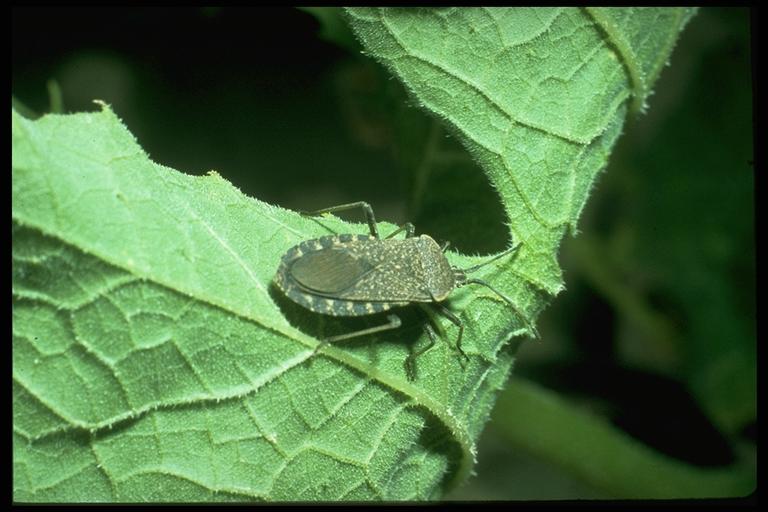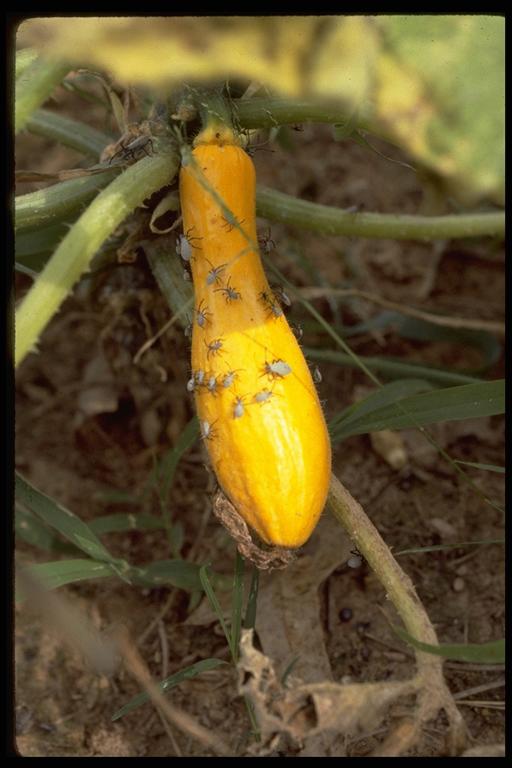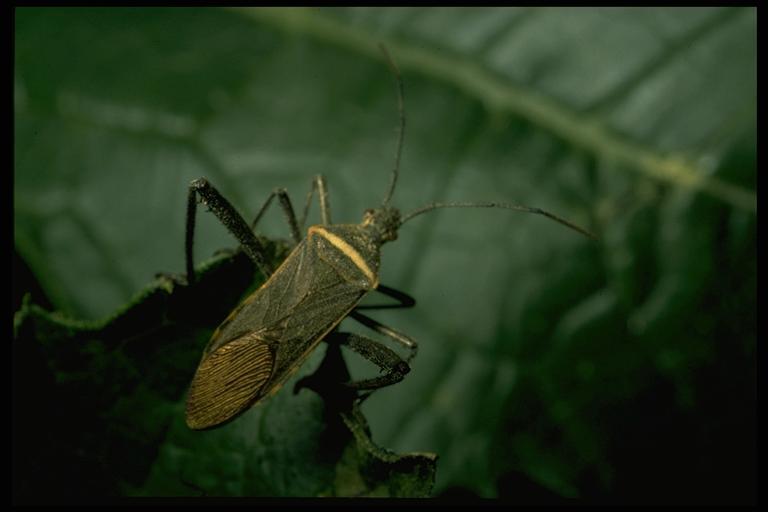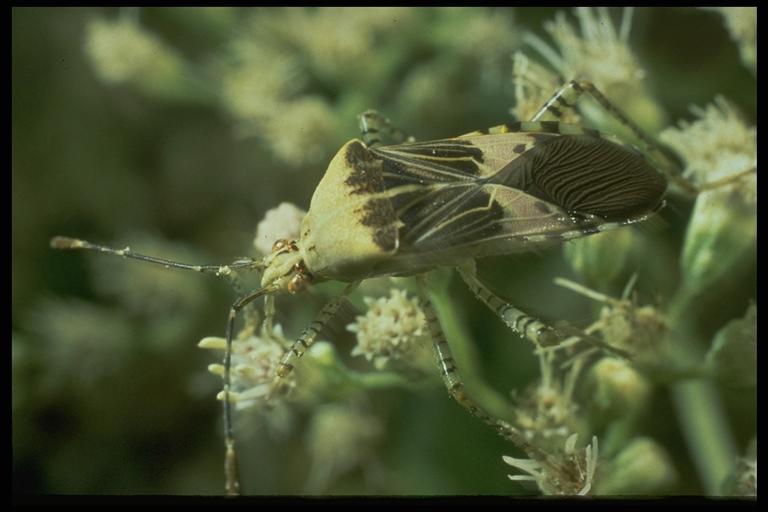
Squash bug, Anasa tristis (DeGeer) (Hemiptera: Coreidae). Photo by J. V. Robinson.
Common Name: Squash bug
Scientific Name: Anasa tristis (DeGeer)
Order: Hemiptera
Description:Adults are dark brown, 1/2 to 2/3-inch long, 1/4-inch wide with fully developed flat wings held over the back of the body. Eggs are shiny brown, oval and usually deposited on their long sides on the underside of leaves in an orderly, tight or loose aggregation forming an angular pattern bordered by larger leaf veins. Developing nymphs are wingless and mostly gray with black antennae and legs.

Squash bugs, nymphs on squash. Photo by Drees.
Life Cycle: During the winter months, adult squash bugs survive in plant debris, under piles of leaf
litter, firewood, boards, and other protected sites. They become active in spring after host plants emerge, mate and lay eggs on the underside of leaves. Nymphs hatch from eggs in about 2 weeks. Upon hatching, they are about 1/8-inch long and green and reddish in color. Initially they aggregate, but as they develop
to nearly the size of winged adults through five stages (instars), the grayish-white nymphs gradually disperse throughout the plants. Development from egg to adult occurs in 45 to 60 days, and up to three generations may occur annually.
Habitat and Food Source(s), Damage: Host plants include pumpkin, squash and other cucurbits. Injured leaves appear grayish and may wilt and die. Populations increase during the season and large numbers of nymphs may occur on the fruit in the fall. Adults are more solitary and tend to occur around the base of the plant near the ground. When crushed, a disagreeable odor is released by this insect. Another coreid common in gardens and similar to squash bugs is Phthia picta (Drury).

Coreid bug, Phthia picta (Drury) (Hemiptera: Coriidae), adult. Photo by Drees.
Hypselonotus is another genus of coreids that is frequently encountered. Eggs can be found by examining the underside of leaves. Injured leaves appear grayish and may wilt and die. Nymphs can be collected by tapping them off the plant into a jar or other suitable container. Adults can be collected similarly or by hand.
Pest Status: Damage leaves and fruit of squash and related plants, occasionally killing heavily-infested plants or parts of plants; medically harmless.

A coreid bug, Hypselonotus sp. (Hemiptera: Coreidae), Photo by Jackman.
For additional information, contact your local Texas A&M AgriLife Extension Service agent or search for other state Extension offices.
Literature: Little 1963; Metcalf et al.1962.